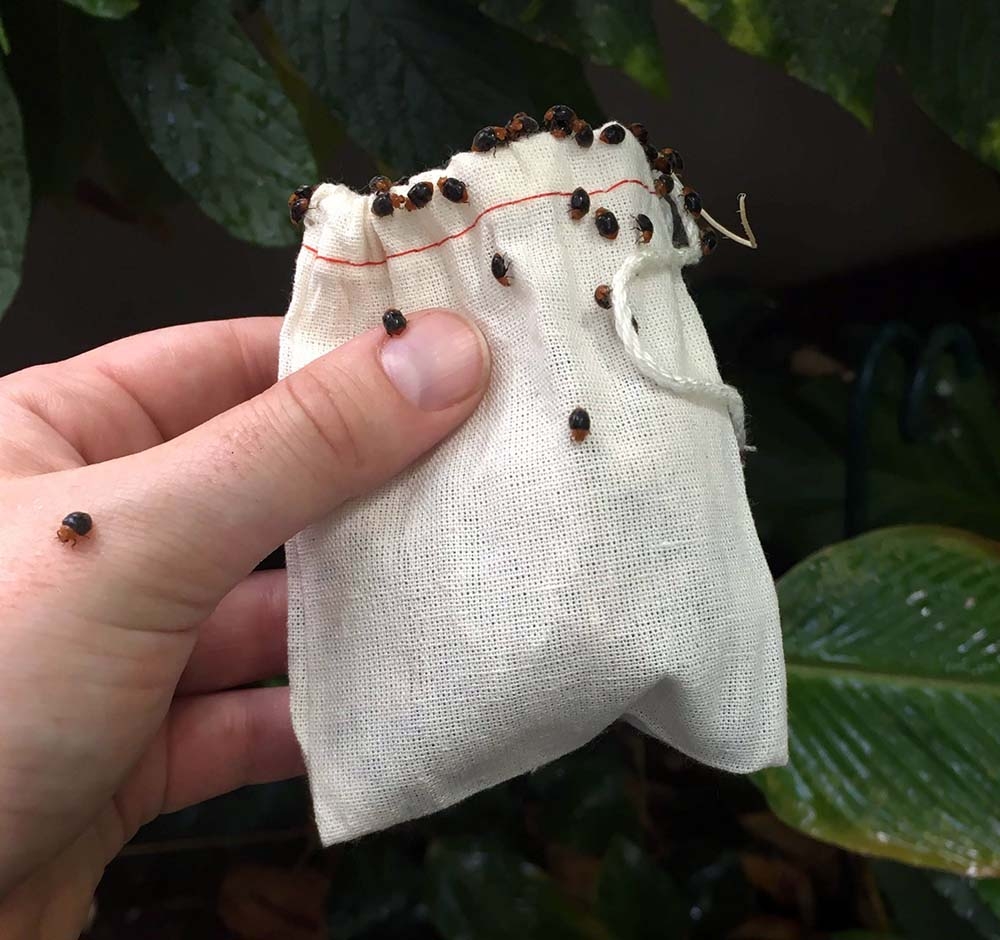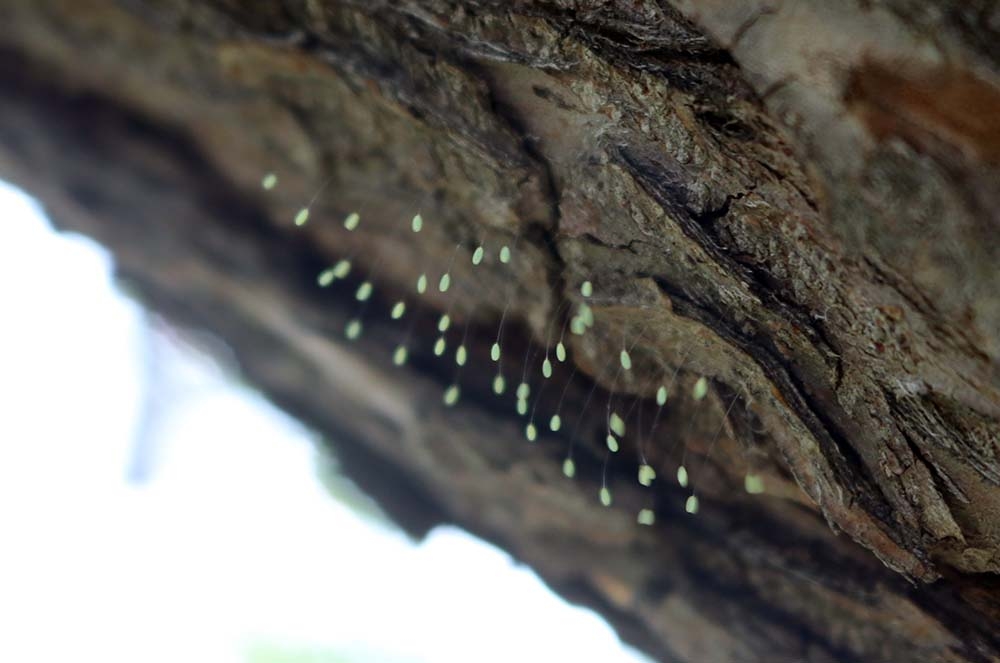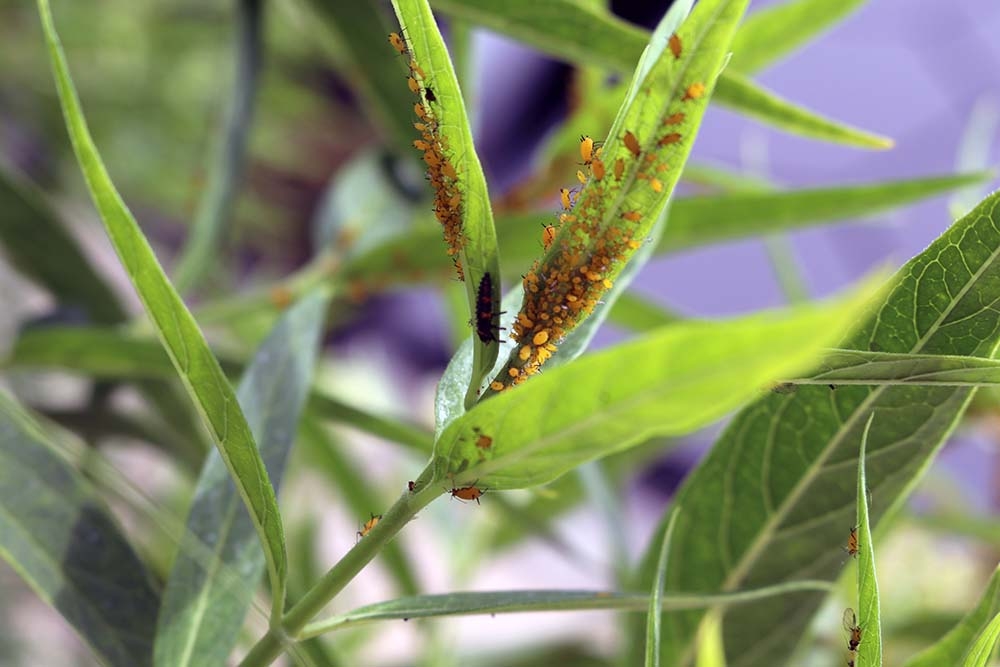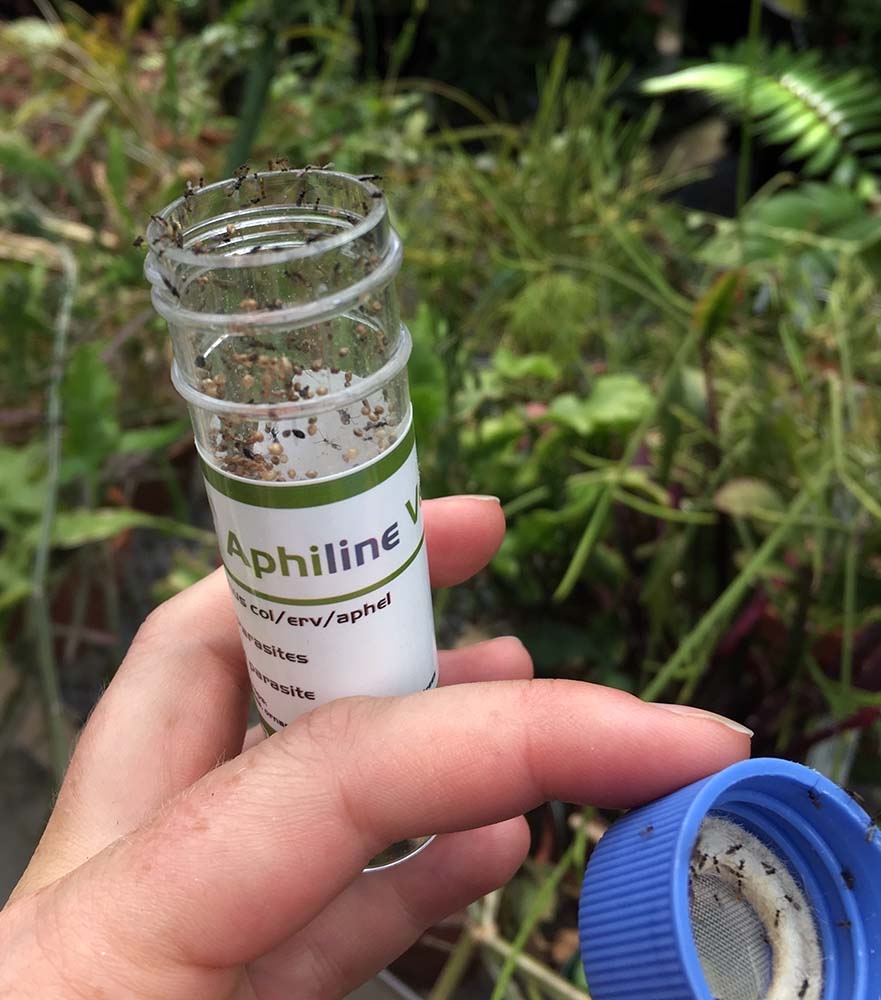Biological Control: Controlling Insects with Insects
When it comes to pest management, Denver Botanic Gardens ascribes to Integrated Pest Management (IPM) strategies to manage and control pest populations. One of the critical components of IPM is biological control – the use of specific organisms (often called natural enemies or biological control agents) to control pests. A high volume of research goes into developing biological control; this may include assessing how effective the natural enemy is, what impacts it may have outside of the desired target and ideal conditions for use. Biological controls aren’t exclusive to insects, but they are the easiest to work with. Fungi, bacteria and nematodes are all also used.
The Gardens predominantly uses biological control within the greenhouses. This reduces the reliance on pesticides, though some are still used when necessary. While the overall goal is to have a sustainable population, the greenhouse staff schedules regular releases of a range of natural enemies to prevent the build-up of pest insects – including aphids, whiteflies and spider mites.
The natural enemies arrive live. Some are in the pupal stage contained in small containers on cards or are adults in vials or drawstring bags. The cards are hung throughout the greenhouse, especially near plants that have infestations or are known to. The adults are released from their containers and fly off in search of prey. Depending on the natural enemy’s strategy, they will either eat the target insect or lay eggs on it. In both cases, the target insect is killed, protecting the plant.
For example, mealybug destroyers, Cryptolaemus montrouzieri, will fly in search of mealybugs, and will consume the entire insect. Mealybug destroyer eggs are laid near populations of mealybugs, and the larvae will also search out the pest insect. Encarsia formosa, a parasitoid wasp, will search out whitefly adults and lay eggs inside. After the eggs hatch, the wasp larvae kill the whitefly by consuming the guts, forming a whitefly mummy. The wasps then pupate and emerge as adults, ready to begin the cycle anew.
Biological control isn’t limited to just plant production – there are plenty of examples of biological control outside in the gardens. One of the most easily recognized are ladybugs – both the adults and the larvae will feed on aphids. Lacewing larvae are also well known for feeding on insects, including aphids and mites.
Biological control is challenging to release out into the gardens because we have no control over where the insects go. Instead, it is far easier to provide habitat for natural enemies. Knowing their host plants, environmental needs and providing water will bring natural enemies into your garden!




Comments
Ladybugs
How interesting. Wayne was here with me the past week. He brought his herb plants with him and found some aphids on them. We tried to buy ladybugs. No luck but we picked the bugs off and the plants look much better.
I'm so sorry your herbs came in with aphids
I'm so sorry your herbs came in with aphids, but picking them off, or rinsing them off with running water, is a great way to get rid of the problem with small numbers! Ladybugs can be fairly fickle to work with (they don't like staying where you put them), so your method sounds like it works great!
Add new comment